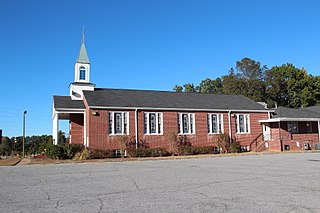
Blind Willie McTell was a Piedmont blues and ragtime singer and guitarist. He played with a fluid, syncopated fingerstyle guitar technique, common among many exponents of Piedmont blues. Unlike his contemporaries, he came to use twelve-string guitars exclusively. McTell was also an adept slide guitarist, unusual among ragtime bluesmen. His vocal style, a smooth and often laid-back tenor, differed greatly from many of the harsher voices of Delta bluesmen such as Charley Patton. McTell performed in various musical styles, including blues, ragtime, religious music and hokum.

William Smith Monroe was an American mandolinist, singer, and songwriter, who helped to create the style of music known as bluegrass. Because of this, he is commonly referred to as the "Father of Bluegrass".
Moran Lee "Dock" Boggs was an influential old-time singer, songwriter and banjo player. His style of banjo playing, as well as his singing, is considered a unique combination of Appalachian folk music and African-American blues. Contemporary folk musicians and performers consider him a seminal figure, at least in part because of the appearance of two of his recordings from the 1920s, "Sugar Baby" and "Country Blues", on Harry Smith's 1951 collection Anthology of American Folk Music. Boggs was first recorded in 1927 and again in 1929, although he worked primarily as a coal miner for most of his life. He was "rediscovered" during the folk music revival of the 1960s and spent much of his later life playing at folk music festivals and recording for Folkways Records.

Fiddlin' John Carson was an American old-time fiddler and singer who recorded what is widely considered to be the first country music song featuring vocals and lyrics.
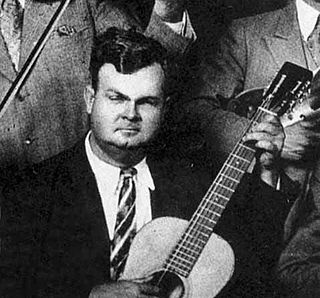
Riley Puckett was an American country music pioneer, best known as a member of Gid Tanner and the Skillet Lickers.
Bill Lowery was an American music entrepreneur.

Appalachian music is the music of the region of Appalachia in the Eastern United States. It is derived from various European and African influences, including English ballads, Irish and Scottish traditional music, hymns, and African-American blues. First recorded in the 1920s, Appalachian musicians were a key influence on the early development of Old-time music, country music, and bluegrass, and were an important part of the American folk music revival of the 1960s. Instruments typically used to perform Appalachian music include the banjo, American fiddle, fretted dulcimer, and guitar.
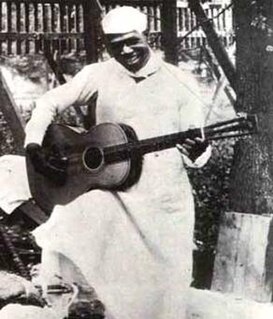
Robert Hicks, better known as Barbecue Bob, was an early American Piedmont blues musician. His nickname was derived from his working as a cook in a barbecue restaurant. One of the two extant photographs of him show him playing a guitar and wearing a full-length white apron and cook's hat.
Clarence "Tom" Ashley was an American musician and singer, who played the clawhammer banjo and the guitar. He began performing at medicine shows in the Southern Appalachian region as early as 1911, and gained initial fame during the late 1920s as both a solo recording artist and as a member of various string bands. After his "rediscovery" during the folk revival of the 1960s, Ashley spent the last years of his life playing at folk music concerts, including appearances at Carnegie Hall in New York and at the Newport Folk Festival in Rhode Island.
Medicine Head was a British blues rock band – initially a duo – active in the 1970s. Their biggest single success was in 1973, with "One and One Is One,” a Number 3-hit on the UK Singles Chart. The group recorded six original albums; the opening trio of which were on John Peel's Dandelion label.

James Gideon "Gid" Tanner was an American old-time fiddler and one of the earliest stars of what would come to be known as country music. His band, the Skillet Lickers, was one of the most innovative and influential string bands of the 1920s and 1930s. Its most notable members were Clayton McMichen, Dan Hornsby (vocals), Riley Puckett and Robert Lee Sweat (guitar).
David Barbe is an American musician and producer/engineer from Athens, Georgia and director of the Music Business Certificate Program at the University of Georgia. He is chief of Chase Park Transduction studio in Athens. Barbe is known for his work as a songwriter, singer, guitarist, and bass guitarist in Sugar, Mercyland, and Buzz Hungry, as well as solo performances. Also, he has produced nearly every album by the popular country rock band Drive-By Truckers, and has worked as producer and engineer with Son Volt. He has an all-star solo band in Athens called the Quick Hooks.
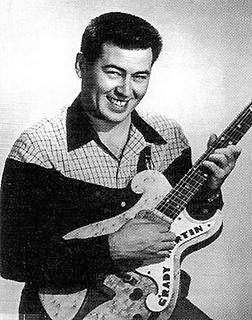
Thomas Grady Martin was an American session guitarist in country music and rockabilly.
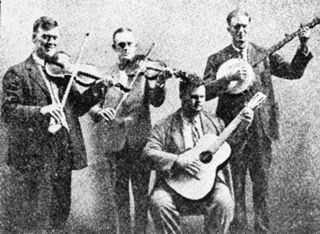
The Skillet Lickers were an old-time band from Georgia, United States.
Emory Lee Gordy Jr. is an American musician and music producer. He was inducted into the Georgia Music Hall of Fame in 1992. His wife, Patty Loveless joined him in the GMHOF in 2005.

Clayton McMichen was an American fiddler and country musician.
Robert Earl Johnson was an old time fiddler who was influenced by the music of Gid Tanner and his Skillet Lickers.
Humphrey Bate was an American harmonica player and string band leader. He was the first musician to play old-time music on Nashville-area radio. Bate and his band, which had been given the name "Dr. Humphrey Bate & His Possum Hunters" by Opry founder George D. Hay, were regulars on the Grand Ole Opry until Bate's death in 1936. The band's recordings, while scant, are considered some of the most distinctive and complex string band compositions in the old-time genre.
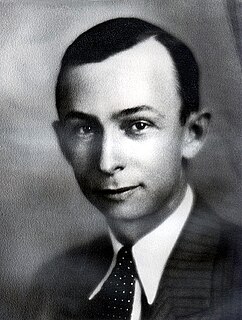
Isaac Daniel Hornsby was an American singer songwriter, musician, recording artist, producer and arranger, studio engineer, band leader & band member. Discovered talent as A&R man with Columbia Records, and radio personality.

Atlanta played a major role in launching country's earliest recording artists in the early 1920s — many Appalachian people such as Fiddlin' John Carson had come to the city and area to work in its cotton mills and brought their music with them. It would remain a major recording center for two decades and a major performance center for four decades, into the first country music TV shows on local Atlanta stations in the 1950s.
